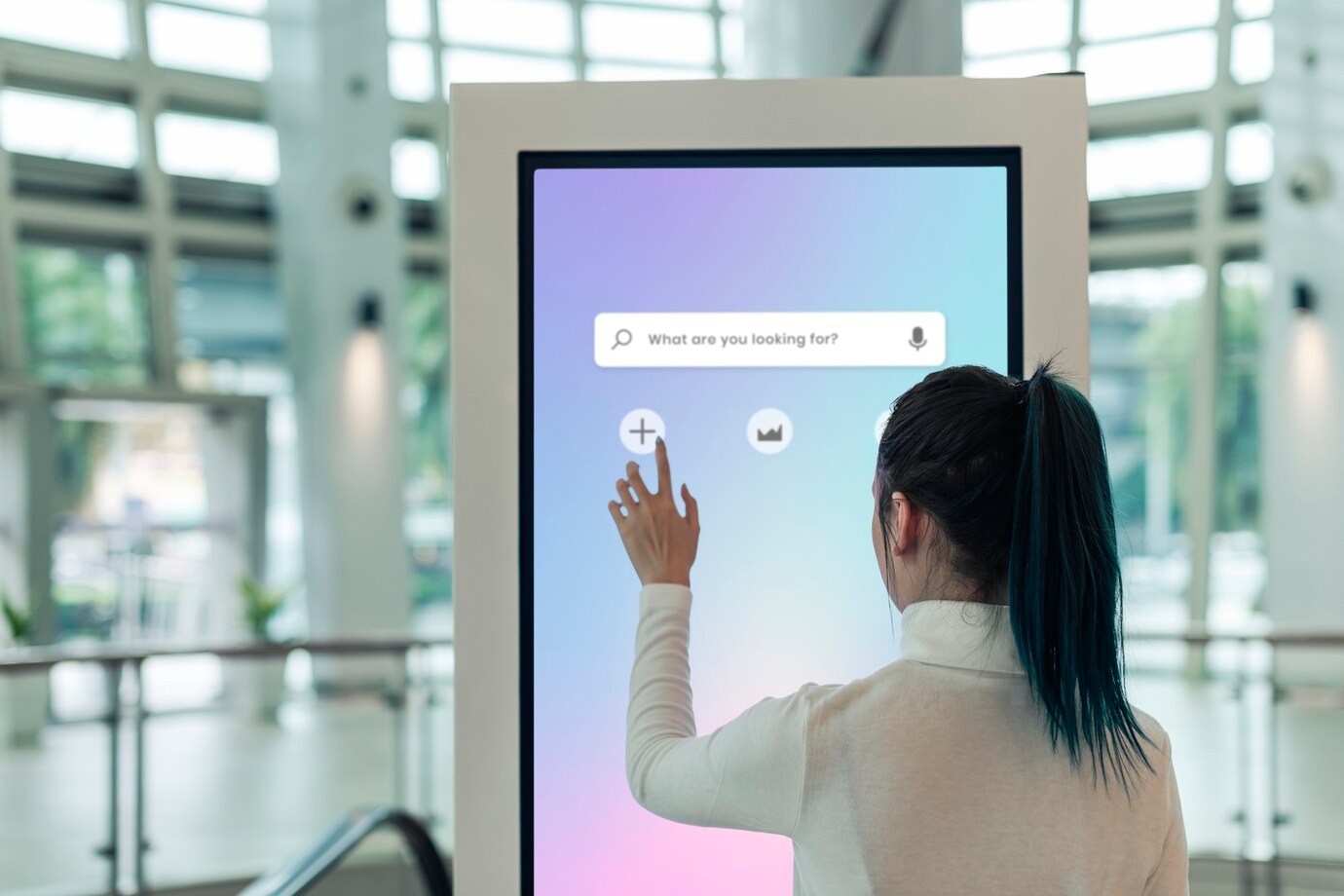
Personalisation in Retail: How to Enhance Customer Experience
In today’s digital age, retail personalisation is no longer just a trend—it’s an expectation. Consumers demand tailored experiences, customised product recommendations, and seamless shopping journeys across both digital and physical retail channels.
Retailers who leverage customer data, AI-driven recommendations, and behavioural analytics can create personalised shopping experiences that increase customer engagement, retention, and loyalty. Those who fail to adapt risk losing market share to competitors offering hyper-personalised services.
This guide explores the importance of personalisation in retail, key customer experience strategies, AI-driven recommendations, and the future of hyper-personalised shopping experiences.
1. What is Retail Personalisation?

Retail personalisation refers to customising the shopping experience based on a customer’s preferences, browsing behaviour, purchase history, and real-time interactions.
Core Components of Personalised Retail Experiences
- AI-Powered Product Recommendations – Tailored suggestions based on user activity.
- Customised Marketing Campaigns – Personalised emails, SMS, and push notifications.
- In-Store Personalisation – Smart mirrors, interactive kiosks, and personalised in-store offers.
- Dynamic Pricing & Promotions – Real-time discounts based on shopping patterns.
- Seamless Omnichannel Experience – Consistency across mobile, web, and in-store shopping.
Example: Amazon’s recommendation engine drives 35% of its total revenue by using AI-powered insights to suggest personalised products.
Why It Matters: Personalisation enhances the shopping journey, leading to higher sales, customer retention, and brand loyalty.
2. How AI-Driven Recommendations are Transforming Retail
Artificial Intelligence (AI) plays a critical role in automating personalisation by analysing vast amounts of customer data in real time.
How AI Enhances Retail Personalisation
- Machine Learning Algorithms – Continuously track and refine customer preferences.
- Predictive Analytics – Forecasts future purchases based on past behaviour.
- Real-Time Adjustments – Updates recommendations as customer behaviour changes.
- Chatbots & Virtual Shopping Assistants – Provide real-time shopping assistance based on user needs.
Example: Netflix’s AI-driven recommendation engine suggests content based on viewing history—a model replicated by retailers to offer personalised product suggestions.
Why It Matters: AI enables retailers to deliver individualised experiences at scale, leading to higher engagement and customer satisfaction.
3. The Impact of Personalisation on Customer Experience
Personalisation is the key to delivering outstanding customer experiences that drive repeat purchases.
How Personalisation Improves Customer Experience
- Enhanced Product Discovery – AI-powered recommendations make it easier for shoppers to find what they need.
- Faster, More Convenient Shopping – Customers receive relevant offers and suggestions without searching manually.
- Increased Customer Trust & Satisfaction – Personalised experiences make shoppers feel valued.
- Higher Engagement & Brand Loyalty – Customers are more likely to return to brands that offer tailored experiences.
Example: Spotify curates personalised playlists based on listening habits—retailers apply the same strategy to curate product suggestions for individual shoppers.
Why It Matters: A positive, personalised experience increases conversions, brand advocacy, and customer retention.
4. Data-Driven Customer Insights: The Foundation of Retail Personalisation
Retailers rely on big data and customer insights tools to power personalisation strategies.
Key Data Sources for Personalisation
Transactional Data – Purchase history and spending patterns.
Behavioural Data – Browsing activity, cart abandonment, and interactions.
Demographic Data – Age, location, and shopping preferences.
Social Media Insights – Engagement levels and product interests.
Real-Time Interaction Data – AI-driven tracking of in-store and online behaviour.
Example: Starbucks uses AI-driven customer insights to personalise rewards and promotions, increasing loyalty program engagement.
Why It Matters: The more data a retailer collects and analyses, the better it can customise experiences to match individual preferences.
5. AI-Powered Chatbots & Virtual Shopping Assistants

AI-driven chatbots are transforming customer service by offering real-time assistance and product recommendations.
Benefits of AI Chatbots in Retail
24/7 Customer Support – Answer queries and provide shopping assistance anytime.
Conversational Commerce – Chatbots help customers find the right products.
Seamless Checkout – AI guides users through the purchase journey, reducing cart abandonment.
Example: H&M’s chatbot assists customers by suggesting outfit combinations based on their style preferences.
Why It Matters: AI chatbots reduce response time, improve customer engagement, and drive sales.
6. In-Store Personalisation: Blending Technology & Physical Shopping
Brick-and-mortar stores are integrating AI and IoT-powered technologies to create personalised in-store experiences.
Tech-Driven In-Store Personalisation
- AI-Powered Smart Mirrors – Suggest outfit combinations and complementary products.
- RFID-Enabled Smart Shelves – Track customer preferences and display personalised recommendations.
- Beacon Technology – Sends location-based offers to customers’ smartphones.
- Augmented Reality (AR) Try-Ons – Customers can try on clothes, makeup, or accessories digitally.
Example: Nike’s flagship store in New York allows customers to customise sneakers and receive AI-powered recommendations based on foot scans.
Why It Matters: In-store personalisation enhances engagement and makes physical shopping more interactive.
7. Overcoming Challenges in Retail Personalisation
Despite its benefits, personalisation comes with challenges that businesses must address.
Common Challenges & Solutions
- Data Privacy Concerns → Ensure transparent data collection policies and comply with GDPR.
- Integration Issues → Use unified customer data platforms to centralise information.
- Scalability Problems → Leverage AI and automation to personalise experiences at scale.
Example: Apple ensures customer trust by maintaining strict privacy policies while using AI for personalisation.
Why It Matters: Addressing these challenges helps build trust and improve engagement.
8. Future Trends in Retail Personalisation
The next era of hyper-personalisation trends will be driven by emerging technologies and deeper AI integration.
Upcoming Personalisation Trends
- AI-Driven Voice Commerce – Smart assistants enabling voice-based shopping.
- Metaverse & Virtual Shopping – Brands creating customised, immersive shopping experiences.
- Blockchain for Secure Personalisation – Enhancing data security while providing tailored services.
- Biometric Personalisation – Facial recognition for in-store tailored experiences.
Example: Gucci launched a virtual sneaker collection that customers can “wear” in AR before purchasing.
Why It Matters: The future of retail will be hyper-personalised, digital-first, and AI-powered.
Conclusion: The Power of Personalisation in Retail

Retail personalisation is reshaping the customer experience, making it more engaging, relevant, and convenient.
Key Takeaways from this blog include AI-driven recommendations boosting conversions and sales, data analytics powering hyper-personalised shopping experiences, and customer experience strategies enhancing engagement and brand loyalty. The future of retail is personalised, omnichannel, and AI-driven.
Ready to enhance your retail strategy? Start implementing AI-driven personalisation today!


